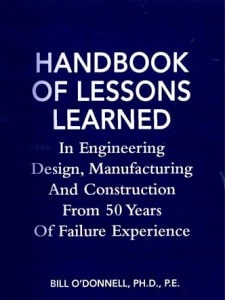
Finite Element Analysis (FEA) Services to Ensure Equipment Integrity, Safety & Reliability
Finite Element Analysis is a software tool used for structural analysis – providing an accurate prediction of how a component (or a complex assembly) responds under various types of loads (such as mechanical force, thermal / transients and vibration).
We provide Finite Element Analysis services on vessels, heat exchangers, skids and other power / process / manufacturing equipment. Stress, thermal, vibration, and fatigue analysis techniques are used to ensure equipment structural integrity, performance, safety and reliability.
This includes both design/ analysis of new equipment and analysis of operating equipment to codes including AWS, API, and ASME. The benefits of FEA Analysis includes:
- Creating a Stronger, Safer Product – components often fail prematurely in fatigue. FEA determines where weaknesses are, and is used to create a stronger design
- Reducing Unneeded Material – low stressed areas add needless weight & cost to the part
- Determining the Strength of a Part – FEA Analysis can predict under what conditions an object will fail and whether it will meet code even without testing
Mechanical Engineering
We have extensive experience performing FEA Analysis on a wide range of components, including furnaces, conveyors, vessels, and welded/non-welded assemblies operating in ambient & extreme environments. Should equipment have limited life, we develop improved designs and/or repair procedures.
Recent Projects
Types of Finite Element Analysis
- Seismic, Vibration & Fatigue
- Heat Transfer
- Linear/ Nonlinear FEA Analysis
- Fracture Analysis
- Component Life Assessment
- Thermal Cycling & Fatigue
- Thermal / Transient
- Buckling Analysis
- Creep & Creep Fatigue
Spacer
- Design Optimization
- Fabrication Process Evaluation
- Vibration, Shock & Impact
- Crack Propagation
- Elevated Temperature
- Water Hammer
- Computational Fluid Dynamics (CFD)
- Fluid Flow Analyses
- Lifting Lug Analysis
Examples Include:
- Autoclaves
- Bellows
- Structures
- Supports
- Lifting Devices
- Fasteners
- Petrochemical
- Transportation
- Aerospace
- Energy
- Military
Partial List of ASME Codes We Perform
B&PV Section III Class 1, 2 and 3 (Nuclear Power Plant Components)
B&PV Section VIII Div. 1 (Design & Fabrication of Pressure Vessels)
B&PV Section VIII Div. 2, Part 5 (Design by Analysis)
B&PV Section VIII Div. 3 (Alternative Rules for Construction of High-Pressure Vessels)
B&PV Section IX (Welding and Brazing Qualifications)
B&PV Section XI (Rules for Inspection of Nuclear Power Plants)
B31.1 (Engineering & Operation of Power Piping)
B31.3 (Process Piping)
B31.4 (Pipeline Transportation Systems for Liquids & Slurries)
BTH-1 & B30.20 (Below the Hook Lifting Devices)
API 579 / ASME 579-1 Fitness For Service
Give us a Call to Discuss Your Engineering Challenges.
Finite Element Analysis Related Links
>> Tom O’Donnell, PE
>> Description of Finite Element Analysis
>> History of Finite Element Analysis
>> Vibration & Fatigue Analysis
>> Portfolio of Engineering & FEA Projects
Learn from the experience of others. Especially when one such “other” is Dr. William O’Donnell, PhD, PE, Founder and President of O’Donnell Consulting Engineers, Inc., and ASME “Engineer of the Year” – his 50 years of experience in analysis of components including fatigue and fracture safety evaluations and failure analyses are now comprised in this volume.
If you are interested learning more in Engineering Design, Manufacturing and Construction, as well as Failure Analysis, then this book is a must have!
$49.95*
* Does not include shipping, handling or tax





